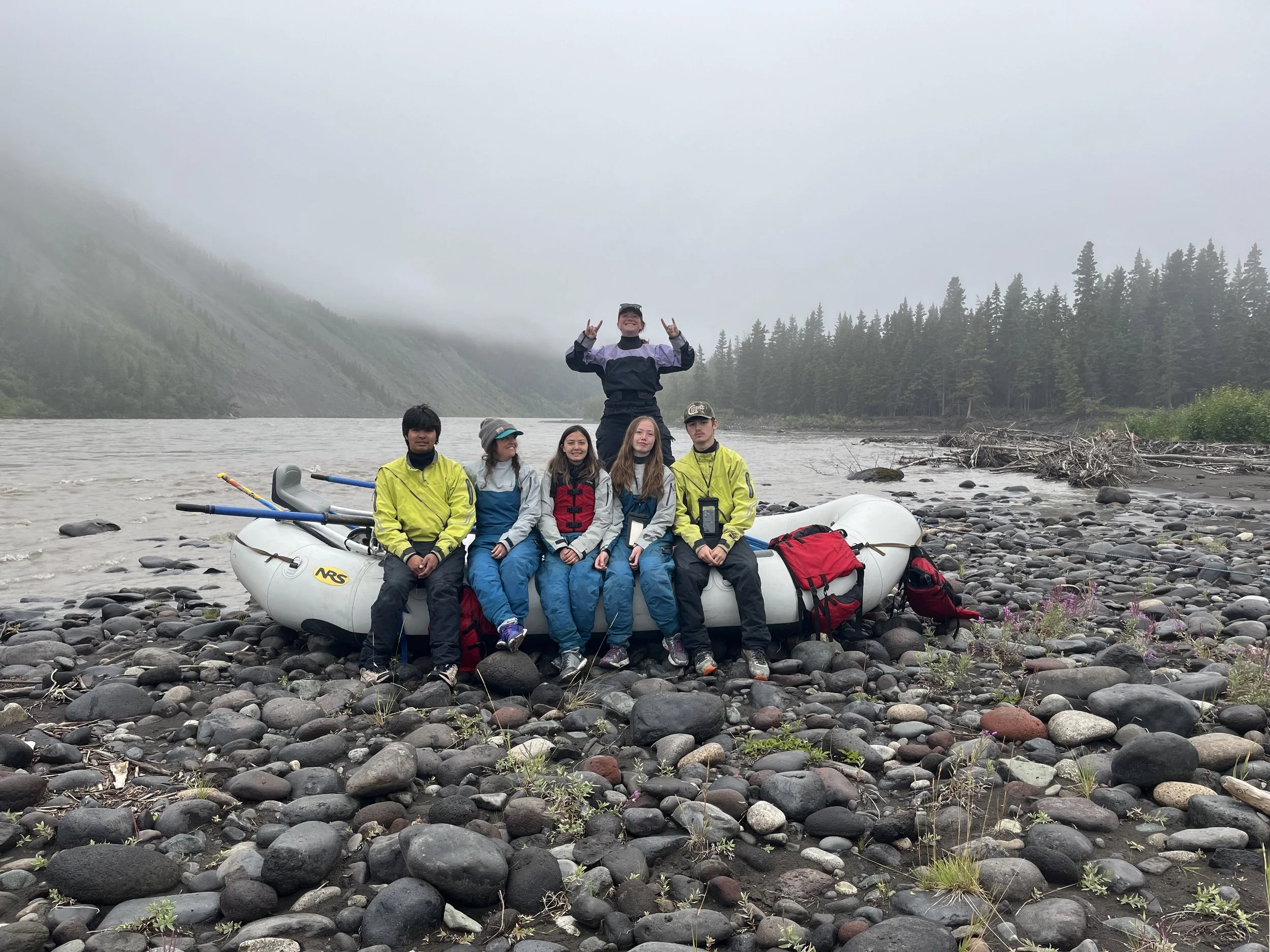Rafting on the Copper River
Day 5 of a rafting trip that took us from the Gakona all the way to Chitina. YETIs and their guide Macey. Photo by Colleen Merrick
August 14, 2025
By Cadence Tubbs - CRNA YETI
When people think of rafting on the Copper River, they get scared. They imagine a rough and wild ride where injuries are almost certain. And to be honest, I was one of those people. I had only ever heard bad stories about the Copper. So, when I was presented with the opportunity to raft it at the start of the summer, I was nervous— to say the least.
But I decided to roll the dice and go on the trip. It was a mix of positive peer pressure and all the “what ifs.”
What if it’s fun? What if I learn new things? What if this is a once-in-a-lifetime opportunity?
For context, during the last week of July, the Copper River Native Association’s Youth Employment Training Initiative (YETI) partnered with Wrangell-St. Elias National Park and Preserve (WRST NPS) to raft the Copper River. We gathered up our camping gear—tents, sleeping bags, sleeping mats, chairs, warm clothes, dry bags—and, of course, lots of snacks. On a sunny Monday, we met our guides and the rafts at the Gakona River. Everyone was buzzing with nerves. We spent hours packing the boats, struggled into dry suits, ate lunch, and finally pushed off the shore.
All of the YETIs were in one boat with our guide, Macey Schieffer from McCarthy River Tours. This was her sixth year commercially rafting. She was hilarious, full of jokes about life as a “dirtbag,” and always working hard—but still managing to have fun. Macey said the best part of rafting is the community: meeting up with friends and floating in the sun. When I asked if she’d recommend her job, she said, “It’s the most best thing you could do ever,” and joked about how she’s always trying to get others to become raft guides too.
That first day was long and tiring, and when we reached our campsite, we discovered the day wasn’t over—we had to set up all our gear. While the YETIs pitched their tents and took naps, the guides set up a full kitchen, a fire pit, the groover (our camp toilet), and started on taco dinner.
This is life on the river:
Eat, take down gear, struggle into the dry suit, float, struggle out of the dry suit, eat, set up gear, sleep, repeat.
Our other hardworking guide was Leo Perelman. He’s only 20 but has been rafting since he was 3 years old. Leo was always smiling while rowing his boat—alone with all of our gear—and casually standing up to row or chase the biggest rapids. Every time I saw him, he seemed full of joy. When I asked if he’d recommend this job, he said, “Heck yeah!” He explained that rafting helped him come out of his shell. He used to be really shy, but the job made him more outgoing. That really resonated with me—YETI has also pushed me to meet new people and come out of my comfort zone. Leo said, “Rafting can be intimidating, but guides are good people. And if you get the chance to hang out with them—you should.”
YETIs, guides, and NPS crew stopping for a stretch along the Copper River. Photo by Colleen Merrick
This trip was made possible through a partnership with the WRST NPS team, especially Lee Reininghaus, an archaeologist who studies Ahtna history. Thanks to her, we got out on the land and the river—and learned how to do real archaeological site assessments. Lee, Allyson, and Whitney taught us about measurement, photo documentation, metal detecting, and the effects of erosion and climate change. They told stories about Ahtna village sites, and together we assessed an old homestead (Tanana Jack’s), a summer village with a cultivated yard full of traditional medicinal plants, and locations along the Chetaslina River beneath the bluff known as Bes Cene (Base of the River Bank). We spent a whole day at that site—this is where Robert Marshall once lived.
Our final night brought heavy rain and rising water levels that partially flooded our camp. I woke up in my light blue tent feeling kind of sad that it was already over. It was foggy. Everyone was packing up around me. I just felt like… I could do more of this.
The whole trip made me fall in love with archaeology.
Maybe this is something I want to do in the future?
I’m glad I took the chance. I found the answer to my what ifs.
Thank you to the WRST NPS team for providing this opportunity to learn about Ahtna lands and experience the river. Thanks to the guides and rangers for keeping us safe and well-fed. And thanks to CRNA, Tribal Community Services, and the YETI program for helping me experience life in my community to the fullest.
The Youth Employment and Training Initiative (YETI) program is run by the Copper River Native Association (CRNA). Participants are Copper Basin youth ages 14-19 who are employed for the summer to work with various regional organizations and agencies. YETIs are learning career skills, gaining mentors, and helping their communities. Tsin’aen, YETIs!


